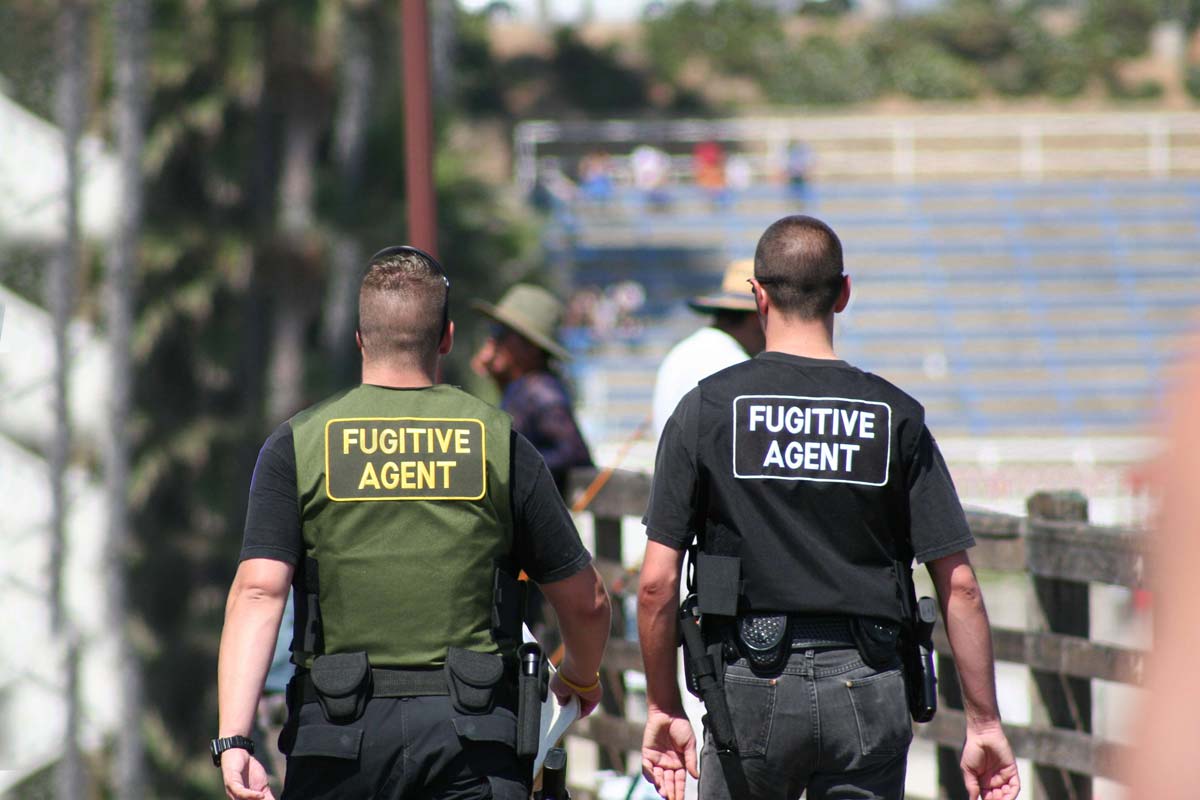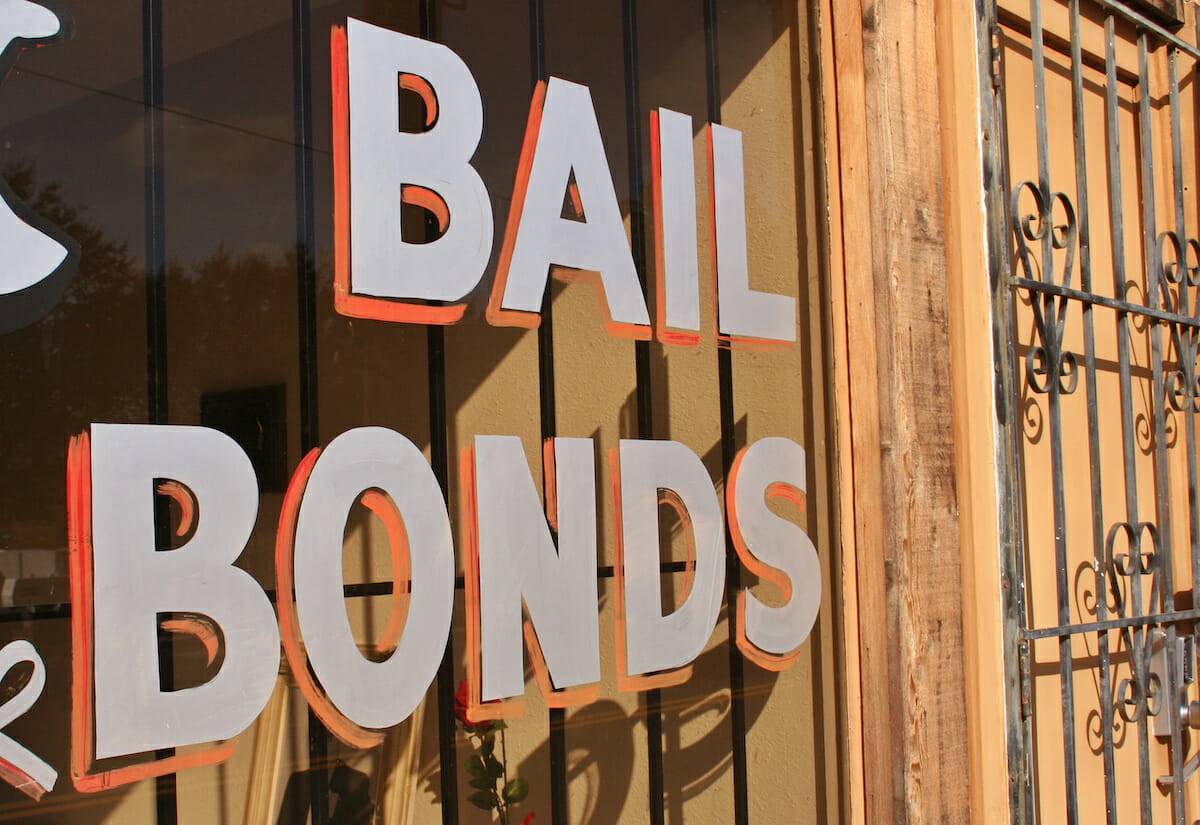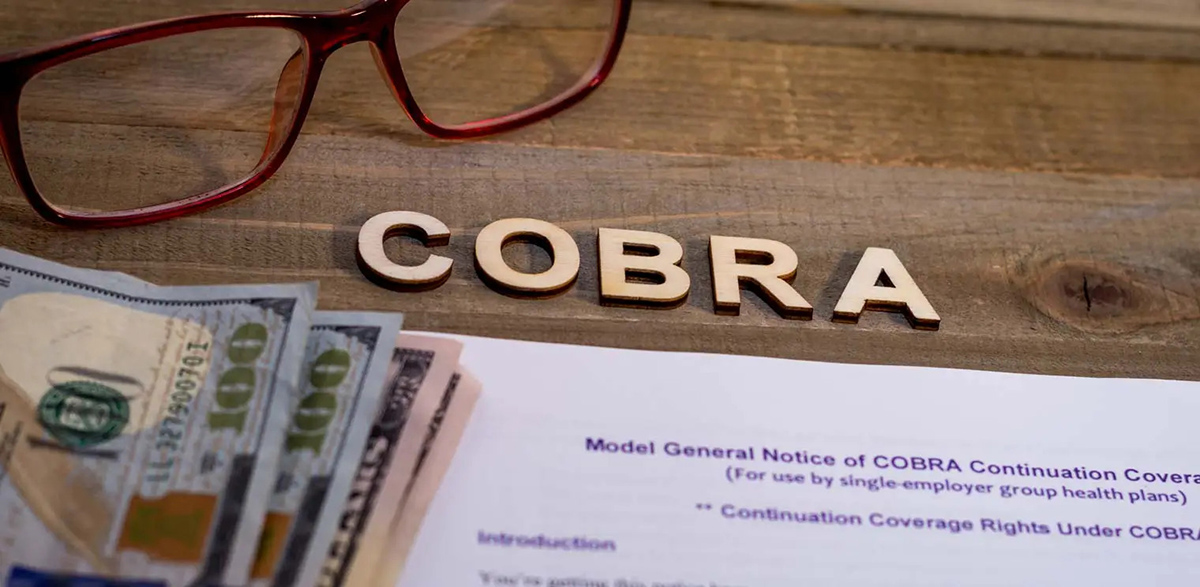

Finance
How Does Bail Bonds Work In California
Modified: February 21, 2024
Learn how bail bonds work in California and the financial implications. Understand the process and requirements to secure a bail bond and get released from custody.
(Many of the links in this article redirect to a specific reviewed product. Your purchase of these products through affiliate links helps to generate commission for LiveWell, at no extra cost. Learn more)
Table of Contents
- Introduction
- Understanding Bail Bonds
- Bail Bonds Process in California
- Types of Bail Bonds in California
- Bail Bond Requirements in California
- Costs and Fees Associated with Bail Bonds
- Collateral in Bail Bonds
- Working with a Bail Bondsman in California
- Bail Bond Agents and Licensing in California
- Advantages and Disadvantages of Bail Bonds
- Conclusion
Introduction
Welcome to California, a state that boasts beautiful landscapes, bustling cities, and a vibrant culture. However, even in this sunny paradise, unfortunate situations can occur that may lead to an individual being arrested and facing legal charges. When this happens, understanding the bail bonds process can be crucial in securing your release from custody.
Bail bonds in California serve as a financial guarantee that the accused person will appear in court for their trial. The purpose of bail is to allow individuals to be released from jail while awaiting their court date, ensuring they can continue with their lives and prepare for their defense.
While bail bonds may seem complex, they are an integral part of the criminal justice system. This article aims to provide a comprehensive understanding of how bail bonds work in California, including the process, requirements, and costs associated with them. Whether you have found yourself or a loved one in need of a bail bond, or you simply have an interest in the legal system, this article will guide you through the intricacies of bail bonds in California.
Understanding Bail Bonds
Before delving into the specifics of how bail bonds work in California, it is essential to have a clear understanding of what exactly a bail bond is. In basic terms, a bail bond is a document or agreement provided by a bail bondsman or bail bond agent to the court. This document ensures the court that the accused person will appear for all required court dates.
When a person is arrested, they are typically taken to a local jail. In order to secure their release, the court will set a bail amount, which is the monetary value that must be paid to the court. However, paying the full bail amount upfront can be financially burdensome for most individuals.
This is where bail bonds come into play. A bail bond works as a security or guarantee to ensure the court’s trust that the accused person will make their mandatory appearances. Instead of paying the full bail amount, a percentage of the bail is paid to the bail bondsman as their fee. The fee, usually around 10% of the total bail amount, is non-refundable and serves as the bail bond agency’s profit.
It is important to note that the bail bond agency is taking on the financial responsibility and risk of the accused person appearing in court. If the defendant fails to appear, the agency may employ a bounty hunter to locate and return the individual to custody, as they could potentially lose the full bail amount to the court.
Overall, bail bonds provide a practical solution for individuals who cannot afford to pay the full bail amount upfront. By working with a bail bond agent, they can secure their release from jail while awaiting their court proceedings.
Bail Bonds Process in California
When someone is arrested in California, the bail bonds process begins. It is important to understand the steps involved in order to navigate through the system efficiently. Here is an overview of the bail bonds process in California:
- Arrest and Booking: The individual is arrested by law enforcement and taken into custody. They are then brought to a local police station or county jail for booking. During this process, their personal information, fingerprints, and photographs are recorded.
- Setting Bail: After the arrest and booking, the defendant’s bail is determined by a judge. The judge will consider various factors such as the severity of the crime, the defendant’s criminal history, and the flight risk posed by the defendant.
- Consulting with a Bail Bondsman: Once the bail amount is set, the defendant or their loved one can contact a bail bondsman. The bail bondsman will gather information about the case and the defendant to assess the risk and determine whether they are eligible for a bail bond.
- Filling out the Bail Bond Application: The bail bondsman will guide the defendant or their loved one through the process of completing a bail bond application. This application includes personal and financial information necessary for the bail bond process.
- Posting the Bail Bond: After the application is completed and approved, the bail bondsman will post the bail bond to the court. This means that the bail bondsman becomes the surety and takes on the financial responsibility for the full bail amount if the defendant fails to appear in court.
- Release from Custody: Once the bail bond is posted, the defendant will be released from custody. It is important for the defendant to understand their obligations, such as attending all court appearances and following any conditions set by the court.
- Completion of the Case: Once the defendant has appeared in court and the case is resolved, the bail bond is exonerated, and any collateral provided is returned to the person who posted it.
The bail bonds process in California can vary depending on the specific circumstances of the case. It is essential to work with a reputable and experienced bail bondsman who can guide you through the process and ensure a smooth and efficient release from custody.
Types of Bail Bonds in California
In California, there are different types of bail bonds available depending on the specific circumstances of the case and the defendant’s eligibility. Understanding the options can help individuals make informed decisions when it comes to securing their release from custody. Here are the common types of bail bonds in California:
- Cash Bail Bonds: Cash bail bonds involve paying the full bail amount in cash or certified funds to the court. Once the case is completed and all court appearances are made, the bail amount is returned, minus any court fees or fines. However, paying the full bail amount upfront can be financially challenging for most people.
- Surety Bail Bonds: Surety bail bonds are the most common type of bail bonds used in California. They involve working with a bail bondsman who acts as a surety, guaranteeing the court that the defendant will appear for all required court dates. The defendant or their loved one pays a percentage of the total bail amount to the bail bondsman as their fee. The bail bondsman then posts the bail bond to the court.
- Property Bail Bonds: Property bail bonds involve using real estate or other valuable property as collateral to secure the bail bond. The value of the property must exceed the bail amount. If the defendant fails to appear in court, the court may foreclose on the property to cover the bail bond amount.
- Immigration Bail Bonds: Immigration bail bonds are specific to individuals facing immigration-related charges or issues. These bail bonds are posted to immigration authorities and are designed to ensure that the defendant appears at all immigration court proceedings.
- Or Release on Recognizance: In some cases, the court may decide to release the defendant on their own recognizance (OR). This means that the defendant is released without the need for bail or a bail bond. The court believes that the defendant is not a flight risk and will appear in court as required.
It is important to note that each type of bail bond may have specific eligibility criteria, and the availability of certain options may vary depending on the nature of the case and the defendant’s background. Working with an experienced bail bondsman can help individuals navigate through the various types of bail bonds and choose the most suitable option.
Bail Bond Requirements in California
When it comes to securing a bail bond in California, there are certain requirements that must be met. These requirements ensure that the bail bondsman can trust the defendant to fulfill their obligations and appear in court as required. Here are the common bail bond requirements in California:
- Identification: The defendant must provide valid identification, such as a driver’s license or passport, to the bail bondsman. This helps establish their identity and ensures that they are who they claim to be.
- Contact Information: The defendant must provide accurate contact information, including their address, phone number, and email. This allows the bail bondsman to stay in touch with the defendant throughout the duration of the case.
- Cosigner: In many cases, a cosigner is required for a bail bond in California. A cosigner is a person who agrees to take on the financial responsibility of the bail bond if the defendant fails to appear in court. The cosigner must provide their identification and demonstrate financial stability.
- Proof of Income or Collateral: Bail bond agents may require the defendant or the cosigner to provide proof of income or valuable collateral as a form of security. This ensures that the bail bond agent has a means to recover their losses if the defendant fails to fulfill their obligations.
- Employment Verification: In some cases, the bail bondsman may require proof of the defendant’s employment. This helps establish their stability and likelihood of appearing in court as required.
- Payment: The defendant or their loved one must pay the bail bondsman’s fee, typically around 10% of the total bail amount. This fee is non-refundable and serves as the bail bondsman’s profit for taking on the financial risk of the bail bond.
It is important to note that the specific requirements for a bail bond may vary depending on the bail bondsman and the circumstances of the case. It is advisable to work with an experienced bail bondsman who can guide you through the requirements and ensure a smooth and efficient process.
Costs and Fees Associated with Bail Bonds
When obtaining a bail bond in California, there are costs and fees associated with the process. It is important to understand these expenses to make informed decisions and plan accordingly. Here are the common costs and fees you can expect when securing a bail bond:
- Bail Bondsman’s Fee: The bail bondsman’s fee is typically a percentage of the total bail amount and is non-refundable. In California, the fee is usually around 10% of the bail amount. For instance, if the bail amount is set at $10,000, the fee would be $1,000.
- Court Fees: In addition to the bail bondsman’s fee, there may be court fees associated with the bail bond process. These fees vary depending on the county and can range from a few hundred to a few thousand dollars.
- Collateral: Depending on the circumstances, the bail bondsman may require collateral as security for the bail bond. Collateral can be in the form of valuable assets such as real estate, vehicles, or jewelry. The value of the collateral is typically higher than the bail amount.
- Interest: In some cases, bail bond agencies may charge interest on the bail bond payment if a payment plan is agreed upon. This interest can vary depending on the terms and conditions set by the bail bondsman.
- Additional Expenses: There may be additional expenses associated with the bail bond process, such as charges for background checks, processing fees, or any costs related to tracking down the defendant if they fail to appear in court.
It is important to carefully review and understand the costs and fees associated with the bail bond before entering into an agreement. Transparency and open communication with the bail bondsman can help avoid any surprises or misunderstandings in the future.
It’s worth noting that bail bonds offer a practical solution for individuals who cannot afford to pay the full bail amount upfront. However, it’s essential to keep in mind that the bail bondsman’s fee is non-refundable, even if the charges are dropped or the case is dismissed. It is always recommended to weigh the costs and benefits of obtaining a bail bond and consider alternative options if feasible.
Collateral in Bail Bonds
In certain cases, a bail bondsman may require collateral as a form of security when providing a bail bond in California. Collateral acts as a guarantee for the bail bondsman, providing assurance that they will not suffer financial losses if the defendant fails to meet their obligations. Here is an overview of how collateral works in bail bonds:
Collateral is typically an asset or property that has significant value and can be used to cover the bail amount in the event the defendant does not appear in court. The value of the collateral must be equal to or higher than the total bail amount.
Common forms of collateral that may be accepted include:
- Real estate properties
- Vehicles
- Jewelry
- Stocks or bonds
- Bank accounts
- Electronics or valuable items
The bail bondsman will assess the value of the collateral to determine its acceptability and coverage. It is important to note that the bail bondsman has the right to sell the collateral to recover any losses incurred if the defendant fails to appear in court.
Collateral serves as a security measure for the bail bondsman, as they take on the risk by providing a bail bond without the defendant paying the full bail amount. If the defendant adheres to all court requirements and appears for all scheduled hearings, the collateral will be returned once the case concludes.
Working with a bail bondsman who requires collateral can be an option for defendants who may be seen as a higher risk due to factors such as criminal history or flight risk. Collateral provides assurance to the bail bondsman that they have a means to recover their losses if the defendant fails to fulfill their obligations.
It’s important to carefully consider the potential risks and benefits of using collateral for a bail bond. If you have concerns about providing collateral, it is recommended to discuss alternative options or seek advice from a legal professional.
Working with a Bail Bondsman in California
When faced with the need for a bail bond in California, it is crucial to find a reputable and trustworthy bail bondsman to guide you through the process. Working with a bail bondsman can help ensure a smooth and efficient release from custody. Here are some key aspects to consider when working with a bail bondsman in California:
- Research and Reputation: Start by researching local bail bond companies and their reputation. Look for testimonials, reviews, and ratings to gauge their reliability and professionalism. It is important to work with a licensed and experienced bail bondsman who is well-versed in the California legal system.
- Communication and Availability: Choose a bail bondsman who is responsive and available 24/7. Arrests can happen at any time, so it is essential to have someone who can answer your questions and provide guidance promptly.
- Transparency and Explanation of Fees: Ensure that the bail bondsman provides clear explanations of all costs and fees associated with the bail bond. They should outline the percentage of the bail bond fee, any additional expenses, and their payment options. A reputable bail bondsman will be transparent and willing to answer any questions you may have.
- Collateral Requirements: If collateral is required, discuss the terms and conditions of using your assets as security. The bail bondsman should explain the process, the estimated value of the collateral, and the time it will be held. Ensure that you fully understand the implications of providing collateral.
- Confidentiality: Working with a bail bondsman requires sharing personal and sensitive information. Choose a bail bondsman who values confidentiality and takes measures to protect your privacy.
- Professionalism and Ethics: A reputable bail bondsman will conduct business ethically and professionally. They should follow all legal guidelines and treat you with respect and empathy during the entire process.
- Court Appearance Support: A reliable bail bondsman will help guide you through the court process and remind you of upcoming court appearances. They can provide information about court procedures and ensure that you are prepared for each hearing.
Remember, working with a bail bondsman is a partnership. Be honest and upfront about your situation and fully comply with all court requirements. Maintaining open communication and adhering to your obligations will set the foundation for a successful working relationship with your bail bondsman.
By selecting a reputable bail bondsman who prioritizes your needs and best interests, you can navigate the bail process more smoothly and ensure a timely release from custody.
Bail Bond Agents and Licensing in California
In California, bail bond agents play a crucial role in the bail process. These agents are professionals who help individuals secure bail bonds and navigate the legal system. It is important to understand the licensing requirements and regulations governing bail bond agents in California. Here is an overview:
Licensing Requirements: In California, bail bond agents must be licensed by the California Department of Insurance (CDI). To obtain a bail bond agent license, individuals must meet specific criteria, including completing pre-licensing education, passing a licensing examination, and undergoing a background check.
Education: Prospective bail bond agents are required to complete a minimum of 20 hours of approved pre-licensing education. This training covers topics such as bail laws, ethics, and business practices. It ensures that bail bond agents have a comprehensive understanding of their role and responsibilities.
Licensing Examination: After completing the pre-licensing education, individuals must pass a state licensing examination administered by the CDI. This examination tests their knowledge of bail laws, regulations, and industry practices.
Background Check: To qualify for a bail bond agent license, individuals must undergo a background check, including fingerprinting. The CDI examines the applicant’s criminal history and conducts thorough screening to ensure the individual is of good character and can be entrusted with the duties of a bail bond agent.
Continuing Education: Once licensed, bail bond agents in California must fulfill continuing education requirements to maintain their license. This ensures that they stay updated with any changes in bail laws and regulations.
Regulations and Oversight: Bail bond agents in California are subject to regulations and oversight by the CDI. This regulatory body ensures that agents operate with integrity, comply with legal requirements, and protect the rights and interests of their clients.
It is essential to work with a licensed bail bond agent who abides by California’s laws and regulations. By choosing a licensed professional, you can have confidence in their knowledge, expertise, and adherence to ethical standards.
Before engaging the services of a bail bond agent, you can verify their license with the CDI through their online licensee search tool. This allows you to confirm their credentials and ensure they are authorized to operate as a bail bond agent in California.
By understanding the licensing requirements and regulations governing bail bond agents in California, you can make informed decisions and work with reputable professionals who are committed to upholding the highest standards of professionalism and ethics.
Advantages and Disadvantages of Bail Bonds
When someone is arrested and facing criminal charges, securing a bail bond can offer several advantages. However, it is essential to consider both the advantages and disadvantages before deciding to pursue a bail bond. Here are the main advantages and disadvantages of bail bonds:
Advantages:
- Release from Custody: The primary advantage of a bail bond is that it allows the defendant to be released from custody while awaiting trial. This means they can go back to their daily routine, work, and personal responsibilities.
- Preparation: Bail bond release provides the defendant with the opportunity to better prepare for their defense. They can consult with their attorney, gather evidence, and gather witness statements, ensuring a stronger case.
- Maintaining Relationships: Bail bond release allows the defendant to maintain relationships with loved ones. They can seek emotional support and guidance from family and friends during a challenging time.
- Access to Resources: Being out on bail provides the defendant with access to resources they may need for their case. They can consult with legal professionals, gather necessary documents, and make arrangements for witnesses or experts.
- Presumption of Innocence: By obtaining a bail bond, the defendant can maintain their presumption of innocence until proven guilty. They have the opportunity to continue with their lives and fight their case from a position of freedom.
Disadvantages:
- Financial Obligation: The primary disadvantage of a bail bond is the financial obligation associated with it. Bail bond fees, court costs, and potential collateral requirements can be burdensome for individuals and families, especially if they are unable to access the funds needed.
- Non-Refundable Fees: Bail bond fees are typically non-refundable, meaning they will not be returned even if the charges are dropped or the case is dismissed. This can result in a significant financial loss for the defendant or their loved ones.
- Risk of Failure to Appear: If the defendant fails to appear in court as required, they risk losing the bail bond amount and may face additional legal consequences. This can result in the bail bond agency taking action to locate and apprehend the defendant.
- Collateral Requirements: In some cases, bail bond agencies may require collateral as security for the bail bond. Putting valuable assets at risk can be a disadvantage, as the failure to fulfill obligations may lead to the loss of the collateral.
- Stress and Psychological Impact: The process of dealing with legal charges and the uncertainty of the outcome can take a toll on the defendant’s mental wellbeing. The emotional and psychological impact of the legal process can be a significant disadvantage of bail bonds.
Considering both the advantages and disadvantages of bail bonds is crucial when making decisions related to securing a bail bond. It is important to weigh the potential benefits against the financial and emotional costs, seeking advice from legal professionals or trusted advisors when necessary.
Conclusion
Navigating the world of bail bonds in California can be a daunting task, especially when faced with the stress and uncertainty of legal charges. However, understanding how bail bonds work and the options available can help alleviate some of the challenges associated with the process.
In this article, we have explored the essential aspects of bail bonds in California. We discussed the purpose and function of bail bonds, the different types of bail bonds, the requirements, costs, and fees involved, as well as the role of bail bond agents and their licensing.
While bail bonds provide an avenue for individuals to secure their release from custody, it is important to carefully consider the advantages and disadvantages. The benefits of being temporarily released from jail, preparing for trial, and maintaining personal and professional relationships must be weighed against the financial obligations, potential risks, and emotional strain that come with bail bonds.
If you find yourself in need of a bail bond, it is crucial to work with a reputable and licensed bail bondsman who can guide you through the process. Their expertise and professionalism can provide clarity and assistance during a challenging time.
Remember, each case is unique, and the best course of action may vary. Consultation with legal professionals and trusted advisors can help you make informed decisions regarding the use of a bail bond and explore alternative options when appropriate.
By arming yourself with knowledge and understanding, you can navigate the bail bond process with greater confidence and ensure that your rights are protected throughout the legal proceedings.














